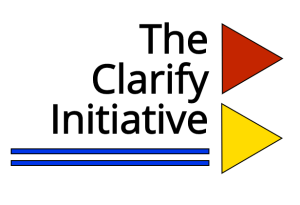6. Pronouns
Jonathon Reinhardt
⇒ 6.1 What is a pronoun?
⇒ 6.2 Pronoun Parameters
- Number: singular or plural
- Case: subject or object
- Person: first, second or third
- Gender: feminine, masculine, neuter, neutral
⇒ 6.3 Personal, Possessive, & Reflexive pronouns
⇒ 6.4 Other pronoun types
⇒ 6.5 Pronouns in language power techniques
⇒ 6.6 Key points
⇒ 6.7 Key concepts
The purpose of this module is to introduce the basics of pronouns. Each section is linked to an interactive activity and a corpus analysis activity, and the module concludes with comprehensive activities as well as key points and key concepts for review purposes. All interactive activities are in 6A. Pronouns Activities and all corpus analysis activities are in 6B. Corpus Activities for Pronouns.
6.1 What is a pronoun?
A pronoun is a word that replaces, represents, or refers to a single noun or noun phrase, which can be singular or plural.
- That big friendly dog is hilarious. → She is hilarious.
- Roxy is hilarious. → She is hilarious.
- I love cats. → I love them.
- I love big lazy orange cats with stripes. → I love them.
Unlike nouns, pronouns cannot be modified by determiners and adjectives.
That big friendly she is hilarious.
If languages didn’t have pronouns, we’d have to constantly repeat nouns and noun phrases.
- My dog loves to play ball. My dog is a Golden Retriever. I love my dog.
Instead we can say:
- My dog loves to play ball. She is a Golden Retriever. I love her.
⇒ Go to Activity 6.1
⇒ Go to Corpus activity 6.1 What is a pronoun?
6.1.1 Referents, antecedents, & postcedents
The noun or noun phrase that a pronoun replaces is called its referent. It is not necessarily in the same sentence, and possibly only understood in the context of conversation. If the referent comes before the pronoun it is its antecedent; if it comes after it is its postcedent.
- That’s Roxy the dog. She is a good girl. (‘Roxy the dog’ is the antecedent of ‘she’)
- When I saw her, Roxy the dog started jumping up and down. (‘Roxy the dog’ is the postcedent of ‘her’)
In writing the referent may also be unstated and understood, helping to establish a fictional pretense or an author-reader relationship. Sometimes it’s the very first line.
- Call me Ishmael. – Herman Melville, Moby Dick (The reader understands the narrator to be ‘me’)
- It was love at first sight. – Joseph Heller, Catch-22 (The reader understands that they will eventually understand the postcedent of ‘it’)

⇒ Go to Activity 6.1.1
⇒ Go to Corpus Analysis Activity 6.1.1
6.1.2 Pronoun types
Pronouns are a closed class, which means we can’t easily add new ones; there are about 100 of them. There are 7 different types of pronouns in English:
- personal, e.g. I, me, them, him
- possessive, e.g. mine, theirs, hers
- reflexive, e.g. myself, himself, ourselves
- indefinite, e.g anyone, all, few, one, somebody
- demonstrative, e.g. this, that, these, those
- interrogative, e.g. what, which, who, whom, whose
- relative, e.g. that, which, who, whom
Many indefinite and demonstrative pronouns are also determiners. When one is acting on its own as a subject or object, it is a pronoun, and when it is modifying/preceding a noun, it is a determiner. Compare:
- This is interesting. (‘this’ is a pronoun)
- This book is interesting. (‘this’ is a determiner modifying the noun ‘book’)
6.2 Pronoun parameters
Most pronouns can be described according to one or more parameter of number, case, person and gender. Pronouns must agree in number, case, person, and/or gender with their referent.
- That was a good movie. I saw
themit yesterday. - The King has taken the throne. Long may she he reign!
6.2.1 Number: singular or plural
Most pronouns – not just personal ones – are either singular or plural:
singular: I, you, he, she, it, they*, who, this, that, one
plural: we, you, they, who, these, those
Some pronouns, like ‘you’, ‘they’, and ‘who’ can be singular or plural, but they are always conjugated as if they were plural.
- You
isare a genius.
* note that ‘they’ is not traditionally considered singular by prescriptivist grammarians, although in use it is and has been for centuries
⇒ Go to Activity 6.2.1
6.2.2 Case: subject or object
Personal pronouns are either subject or object case, depending on what role they play in a sentence. The interrogative/relative pronoun ‘who’ was traditionally for subjects, while ‘whom’ was for objects.
subject: I, you, he, she, it, we, they, who
object: me, you, him, her, it, us, them, whom
- Elizabeth was the queen. → She was the queen.
- The visitors saw the queen. → They saw her.
- My father is a teacher. → He is a teacher.
- The teacher gave the students As. → He gave them As.
The personal pronouns ‘you’ and ‘it’ can be used for both subjects and objects. The other pronouns have different subject and object forms.
- I like you.
Me like you. You like me.You like I.
Subjects come before verbs and are easier to identify than objects. To test whether a personal pronoun is an object, put it after a transitive verb like ‘see’ or ‘eat’, and if the sentence is grammatical, it is an object pronoun.
- I see ____. → I see you. I see her.
- The dog ate ____. → The dog ate them. The dog ate it.
‘Whom’ is the object form of the interrogative (question-asking) and relative pronoun ‘who’, but it is becoming archaic. ‘Whom’ may still be expected in formal writing, and it is still hanging on as an object of a preposition. Which sounds acceptable or not?
- To who is this letter?
- To whom is this letter?
- Who is this letter to?
- Whom is this letter to?
⇒ Go to Activity 6.2.2
⇒ Go to Corpus Analysis Activity 6.2.2
6.2.3 Person: first, second, or third
Personal, possessive, and reflexive pronouns can be described according to the perspective they take:
- 1P – first: I, me, mine, we, us, ours, myself, ourselves
- 2P – second: you, yours, yourself, yourselves
- 3P – third: she, her, hers, he, his, him, it, its they, them, theirs, herself, himself, itself, themselves
When talking or writing about ourselves we use 1P (e.g. I or we). When addressing someone while talking directly to them we use 2P (e.g. you), and when talking about people or things not present or previously referenced we use 3P (e.g. he, she, it, they).
In narrative, point-of-view can be from first, second, or third person perspective. In games, 1P perspectives make the player feel as if they are their character or avatar, while 3P perspectives give players an overview or ‘god’-like perspective. In 2P the player is addressed as ‘you’. It is not often found in narratives, but is found in choose-your-own-adventure stories, LARP, and in interactive fiction.
⇒ Go to Corpus Analysis Activity 6.2.3
6.2.4 Gender: feminine, masculine, neuter, neutral
Grammatical gender in English is marked in 3P pronouns for ‘natural’ reference: he, him, his, himself, she, her, hers, herself
‘It’ is considered neuter, and is used for everything non-human, although pet animals may be called ‘he’ or ‘she’. Traditionally, ships and other large vehicles can also be gendered, ‘Aye, she’s a fine ship, she is!’
Gender in human singular 3P referents with unknown or irrelevant natural gender can be indicated by ‘they’, although strict traditional grammarians say it should be ‘his or her’, because ‘everyone’ is singular.
Everyone brings its lunch.- Everyone brings their lunch. (commonly used)
- Everyone brings his or her lunch. (preferred by traditionalists)
6.2.4.1 Grammatical vs. natural gender
The term ‘natural gender’ has been criticized for legitimate reasons, but it is used in linguistics to contrast with ‘grammatical’, which is not at all tied to sexual identity or biology. Both natural and grammatical gender are marked in many languages, e.g. Spanish, French, and German, not only in pronouns but in nouns. In Spanish, for example, women and walls are feminine, and men and hands are masculine:
la mujer, el hombre, la pared, el mano (the woman, the man, the wall, the hand)
Unlike many other languages, modern English no longer has grammatical gender that corresponds to natural gender; English pronouns are marked for natural gender, not grammatical gender. Like other languages, however, Old English (spoken from 500-1000 BCE) had grammatical genders.
If you have the time and interest, learn about how English lost its grammatical genders in this video by RobWords, “Why doesn’t English have genders? Well…it did!”
In languages like Spanish, inanimate nouns may have a grammatical gender that is not natural, for example in Spanish, walls are not considered female, and hands are not considered male, even though they use ‘la’ and ‘el’ respectively. Linguists use the terms feminine and masculine instead, and note that grammatical gender allows for cohesion and agreement across discourse. For example, in German the word for rug, ‘Teppich’, is masculine.
Der Teppich ist schmutzig. Er ist hässlich. (The rug is dirty. It is ugly.)
Referent pronouns must match the gender of their antecedent, so actually this can be thought of as ‘The rug is dirty. He is ugly.’ but this does not mean that rugs in German are thought of as male, only grammatically masculine.
In English, the referent of ‘it’ in a sentence like the following is ambiguous:
- The cat hunted the rabbit and it was bitten.
In English we don’t know if it was the cat or the rabbit that was bitten.

However, in a language like German, grammatical gender disambiguates subject and object, so there is no ambiguity. For example:
- Die Katze jagte den Hasen und sie wurde gebissen. (The cat hunted the rabbit and it [the cat] was bitten.)
- Die Katze jagte den Hasen und er wurde gebissen. (The cat hunted the rabbit and it [the rabbit] was bitten.)
Note that ‘rabbit’ in German is grammatically masculine whether or not the referent rabbit is biologically male, and ‘cat’ is feminine whether or not the referent cat is biologically female, although there is a way to say female rabbit or male cat if you need to discuss a particular animal’s biological gender.
In English we would need more information from context, but German is unambiguous, because it has grammatical gender. In short, grammatical gender creates cohesion across discourse, that is, it helps people know what is being talked about.
⇒ Go to Activity 6.2.4
6.3 Personal, possessive, and reflexive pronouns
6.3.1 Personal pronouns
Personal pronouns are marked for person, number, case, and sometimes gender. They are:
- I – 1P, singular, subject
- me – 1P, singular, object
- you – 2P, singular/plural, subject/object
- he – 3P, singular, subject, male
- him – 3P, singular, object, male
- she – 3P, singular, subject, female
- her – 3P, singular, object, female
- it – 3P, singular, subject/object, non-human
- we – 1P, plural, subject
- us – 1P, plural, object
- they – 3P, gender-neutral singular/plural, subject
- them – 3P, gender-neutral singular/plural, object
⇒ Go to Activity 6.3.1
⇒ Go to Corpus Analysis Activity 6.3.1
6.3.2 Possessive pronouns
Possessive pronouns can be marked for number, person, and gender, but not for case – that is, they can be either subjects or objects. There are 8 of them:
mine, yours, his, hers, its, theirs, ours, whose
Possessive pronouns correspond to possessive determiners, but remember that as pronouns they replace nouns or noun phrases, while determiners modify a noun.
- My homework is finished. → Mine is finished. (‘mine’ is the subject)
- The dog ate my homework. → The dog ate mine. (‘mine’ is the object)
Note that ‘his’ and ‘its’ are both possessive pronouns and determiners.
- His story doesn’t make sense. (‘his’ is a determiner modifying ‘story’)
- His doesn’t make sense. (his is a possessive pronoun acting as the subject)
- A leopard’s coat has two-toned spots. Its spots are orange and black. Its are different from a cheetah’s. (note: this may be awkward and the third subject might be better expressed with ‘they’, but it is grammatical)

⇒ Go to Activity 6.3.2
⇒ Go to Corpus Analysis Activity 6.3.2
6.3.3 Reflexive pronouns
The reflexive pronouns in English are:
myself, yourself, himself, herself, itself, *themself, ourselves, yourselves, themselves
* not considered standard
Like personal and possessive pronouns, reflexive pronouns are marked for number, person, and gender, but unlike personal pronouns they are not marked for case. They can be objects but not subjects, e.g.:
- I saw myself in the mirror.
- He gave himself a black eye.
Myself went to the store.
They can be used as an emphatic appositive, e.g.:
- You yourself said it
- I myself don’t believe it
Sometimes a reflexive pronoun used as an appositive can go after the verb, e.g.:
- I went myself to check on it
⇒ Go to Activity 6.3.3
6.4 Other pronoun types
6.4.1 Demonstrative pronouns
The demonstrative pronouns in English are: this, that, these, those
This and that are singular, and these and those are plural.
Demonstrative pronouns can be subjects or objects, e.g.:
- This is the way. (subject)
- Don’t say that. (object)
- What are these? (subject complement)
- I want those. (object)
Remember that demonstrative pronouns can also be determiners, e.g.:
- These pretzels are making me thirsty. (these is a determiner modifying pretzels)
- These are delicious pretzels. (these is a pronoun, functioning as a subject by itself)
To make things even more confusing, that is also relative pronoun and a conjunction, e.g.:
- I knew that he wanted to dance. (conjunction)
- I didn’t know the dance that she was talking about. (relative pronoun)
- He knows that dance. (determiner)
- That is a difficult dance. (demonstrative pronoun)
⇒ Go to Activity 6.4.1
6.4.2 Indefinite pronouns
Indefinite pronouns are pronouns that specify a quantity of their referent. There are about 40 of them, but the most common ones are:
all, any, each, few, many, none, one, several, & some
They also include the ‘SANE-BOT’ compounds; these do not necessarily have specifically known referents.
some-/any-/no-/every- + -body/-one/-thing
FYI, the ‘SANE-where’ words (e.g. somewhere, nowhere, etc.) are considered adverbs, because they describe a place, although they act a lot like pronouns, too.
Like other pronouns, indefinite pronouns can be subjects or objects. Like some demonstrative and possessive pronouns, some of them can also be determiners.
- Some people went home. (determiner)
- Some went home. (pronoun – subject)
- Did you see anybody? (pronoun – object)
Unlike other pronoun types, some indefinite pronouns can take determiners and modifiers, unlike other pronoun types, e.g.:
- The green one that flew away.
- He was a member of the chosen few.
Most are singular, some are plural, and some can be either:
- Everything is awesome.
- Several are missing.
- All is well.
- All are here.
The SANE-BOT indefinite pronouns are always singular, they are not determiners, and they do not take modifiers.

⇒ Go to Activity 6.4.2
⇒ Go to Corpus Analysis Activity 6.4.2
6.4.3 Interrogative & Relative Pronouns
Interrogative pronouns are question words: what, which, who/whom, whose
They can function as subjects or objects; ‘whom’ is often preferred as the object form of ‘who’. Also, ‘what‘ and ‘which‘ can be determiners, e.g. ‘what time‘ or ‘which person‘.
- What made the noise? (subject)
- What did you see? (object)
- Who made the noise? (subject)
- To whom did you give it? (object)
- Which made the noise, the dog or the cat? (subject)
- Which did you see? (object)
- Whose is this? (subject)
- Whose are you talking about? (object)
Relative pronouns relate a dependent clause to a NP: that, which, who/whom
- Did you see the thing that made that noise? (subject)
- The animal which we ate was a snake. (object)
- Steve had a drink with some actors who starred in Star Wars. (subject)
⇒ Go to Activity 6.4.3
6.5 Pronouns in language power techniques
Pronouns are used to refer to people, places, things, and concepts that are known to an audience because the referent has already mentioned or is understood from context. Pronouns can be used strategically because they serve as a kind of address form, showing the social relationship between the speaker and the referent:
- informal/formal you: English no longer has separate pronouns for informal, formal, and plural ‘you’ (2nd person) like other languages. Instead, speakers use address forms and nicknames as well as other grammatical forms to show respect and rapport or intimacy.
- generic/specific you: Because ‘you’ can be used generically (to mean ‘one’ or ‘anyone’) and specifically (to mean the person or people being addressed), it can be ambiguous. Generic you can be used strategically to make the listener feel they are being addressed directly even if the speaker doesn’t know them.
- inclusive/exclusive we: ‘We’ can be used inclusively to refer to the speaker and the listener, and exclusively to refer to the speaker and others. Because of this ambiguity, it can be used strategically to make a listener feel they are being included.
- us & them: When used in contrast with ‘they’ referents, the use of ‘we’ pronouns can polarize listeners and make them feel there are only two choices, ‘us vs. them’, and that they belong with the ‘we’ in-group. This can be a powerful propaganda technique.
- they, he, & she: English has used ‘they’ in the singular to refer to gender-neutral individuals in the past, but because it is primarily used for plural, people have wanted a new singular gender-neutral 3rd person pronoun to refer to humans in addition to gender-specific ‘he’ and ‘she’. It can be considered offensive and rude to not use the pronoun an individual has specified for themself, especially if the speaker does not on purpose.
⇒ Go to Comprehensive Activities for 6. Pronouns
- A pronoun replaces, represents, and refers to a noun or noun phrase, creating cohesion across discourse and allowing us not to have to repeat nouns.
- The noun a pronoun replaces is its referent — if it comes before the pronoun it is the antecedent, if after, the postcedent.
- Pronouns are a closed class; there are about 100.
- Personal pronouns are the most common; they must agree in number, case, person, and/or gender with their referent.
- Number refers to singular or plural.
- Case refers to subject, object, or possessive.
- Person refers to first, second, or third person.
- Gender refers to masculine, feminine, neuter, and neutral.
- Grammatical gender is not the same as natural gender. English uses a natural gender pronoun system, while other languages do not.
- Many indefinite and demonstrative pronouns can also function as determiners that modify (i.e., describe or come before) a noun.
- Reflexive pronouns cannot function as subjects.
- Indefinite pronouns can be singular, plural, or both.
- Interrogative pronouns are the wh- question words.
- antecedent
- case
- demonstrative pronoun
- feminine
- first person
- gender
- grammatical gender
- indefinite pronoun
- interrogative pronoun
- masculine
- natural gender
- neuter
- neutral
- number
- object pronoun
- person
- personal pronoun
- possessive pronoun
- postcedent
- referent
- reflexive pronoun
- relative pronoun
- second person
- subject pronoun
- third person
Module author: Jonathon Reinhardt
Last updated: 11 October 2022
This module is part of Critical Language Awareness: Language Power Techniques and English Grammar, an open educational resource offered by the Clarify Initiative, a privately funded project with the goal of raising critical language awareness and media literacy among students of language and throughout society.


a word like 'we', 'hers', or 'someone' that represents and replaces a noun or noun phrase
the noun or noun phrase that a pronoun replaces, represents, or refers to
a referent that comes before its pronoun. More common than postcedents.
a referent that comes after its pronoun
a word that specifies or determines which noun, e.g. 'the', 'a', 'whose', 'many', etc.
in grammar refers to the quality of being singular or plural (i.e. more than one)
in grammar is a category of syntactic function, i.e. what role the word or phrase plays in the sentence. In general, subject case is for what does the action, and object case is for what receives the action.
in grammar refers to perspective of the speaker or writer: first person (e.g. I, we), second person (e.g. you), and third person (e.g. it, they)
in English grammar refers to the sex of the human referent -- male (he, him, his), female (she, her, hers), or neutral (they, them, theirs).
the actor, doer, or primary noun or pronoun of a clause. In English it comes first.
the receiver of the action or doing, as opposed to the subject
a pronoun that specifies a quantity of a referent, or an unspecific referent. These include the SANE-BOT compounds.
this, that, these, & those. They can also be determiners.
in English, the term for the pronouns 'she, hers' and the determiner 'her'
First person (or '1P') means from the perspective of 'I'. 1P pronouns are I, me, mine, myself, we, us, ours, & ourselves.
a system where all nouns are assigned a gender, even when their referents are non-animal, lessening ambiguity and supporting coherence across discourse
a question word functioning as a pronoun, e.g. who, what, which, whom, whose
in English, the term for the pronouns 'he, him, his' and the determiner 'his'
a system where the biological, ascribed, or chosen gender of the referent implicates the grammar form used to refer to the referent
in English, the term for the singular pronouns 'it, its' and the determiner 'its'
in English, the term for pronouns used to refer to any gender, i.e., all except masculine and feminine pronouns
me, you, him, her, it, us, them, who, whom -- any personal pronoun that can serve as an object
the pronouns I, you, he, she, it, we, they, me, him, her, us, them, marked for person, gender, number, and case
the pronouns mine, yours, his, hers, its, ours, theirs, & whose, marked for person, number, and gender. Not to be confused with possessive determiners my, your, his, her, its, our, their, & whose, although his, its, & whose are the same.
the 'self' and 'selves' pronouns
that, which, who, and whom when they are used as pronouns to relate two clauses
Second person (or '2P') means from the perspective of 'you'. 2P pronouns are you, yours, yourself, & yourselves.
I, you, he, she, it, we, they, who -- any personal pronoun that can serve as a subject
Third person (or '3P') means from the perspective of 'he, she, it', or 'they'. 3P pronouns are he, him, his, himself, she, her, hers, herself, it, its, itself, they, them, themself, & themselves. 'Who', 'whom', and indefinite pronouns are also 3P.

